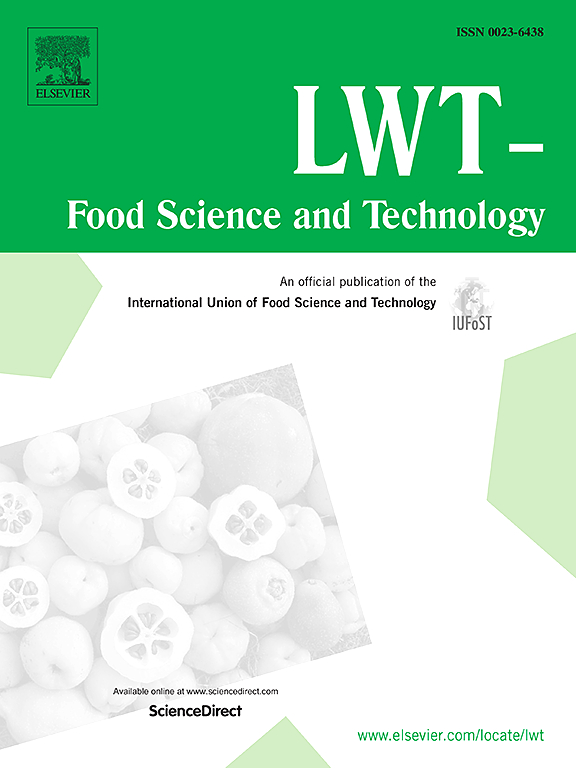用于定量测定乳脂和定性测定乳糖的台式 NMR 光谱仪:从校准曲线到深度学习
IF 6
1区 农林科学
Q1 FOOD SCIENCE & TECHNOLOGY
引用次数: 0
摘要
本研究比较了使用台式质子核磁共振(1H NMR)光谱定量超高温(UHT)牛奶脂肪含量的三种不同方法。评估的方法包括传统的校准曲线和机器学习算法,重点是偏最小二乘法回归(PLS-R)和人工神经网络(ANN),以估算脱脂奶、半脱脂奶和全脂奶中的脂肪含量。其中,人工神经网络为所有类型的牛奶提供了最准确的结果,尤其是脱脂牛奶,其相对标准偏差(RSD)为 14.9%,准确度为-7.3%。校准曲线显示出更高的可变性,脱脂奶的 RSD 为 34.1%,准确度为 25.3%。与校准曲线法相比,PLS-R 提高了准确度,将 RSD 降低到 18.9%,准确度降低到 -17.7%。所开发的方法已成功应用于测定在西班牙不同超市购买的 51 个超高温灭菌奶样本中的脂肪含量,为所考虑的三个类别(包括山羊奶、绵羊奶和咖啡奶)中的每个类别提供了适当的结果。此外,机器学习的应用也证明了其有效性,成功区分了乳糖和无乳糖 UHT 牛奶。本文章由计算机程序翻译,如有差异,请以英文原文为准。
Benchtop NMR spectroscopy for quantitative determination of milk fat and qualitative determination of lactose: From calibration curve to deep learning
This study compares three different methodologies for the quantification of the fat content of ultra-high temperature (UHT) milk using benchtop proton nuclear magnetic resonance (1H NMR) spectroscopy, a flagship of green, accessible, and state-of-the-art technology suitable for modern laboratory environments. The evaluated approaches included traditional calibration curve and machine learning algorithms, with emphasis on partial least squares regression (PLS-R) and artificial neural networks (ANN), to estimate the fat content in skimmed, semi-skimmed and whole milk. Among these, ANN provided the most accurate results for all types of milk, particularly in skimmed milk, with a relative standard deviation (RSD) of 14.9% and an accuracy of −7.3%. The calibration curve showed higher variability, with an RSD of 34.1% and trueness of 25.3% for skimmed milk. PLS-R improved accuracy in relation to the calibration curve approach, reducing RSD to 18.9% and trueness to −17.7%. The developed method has been successfully applied to determine the fat content in 51 samples of UHT milk purchased in different Spanish supermarkets, providing adequate results for each of the three categories considered, including goat's milk, sheep's milk, and milk coffee. Furthermore, the application of machine learning has proven its validity by successfully distinguishing between lactose and lactose-free UHT milk.
求助全文
通过发布文献求助,成功后即可免费获取论文全文。
去求助
来源期刊

LWT - Food Science and Technology
工程技术-食品科技
CiteScore
11.80
自引率
6.70%
发文量
1724
审稿时长
65 days
期刊介绍:
LWT - Food Science and Technology is an international journal that publishes innovative papers in the fields of food chemistry, biochemistry, microbiology, technology and nutrition. The work described should be innovative either in the approach or in the methods used. The significance of the results either for the science community or for the food industry must also be specified. Contributions written in English are welcomed in the form of review articles, short reviews, research papers, and research notes. Papers featuring animal trials and cell cultures are outside the scope of the journal and will not be considered for publication.
 求助内容:
求助内容: 应助结果提醒方式:
应助结果提醒方式:


